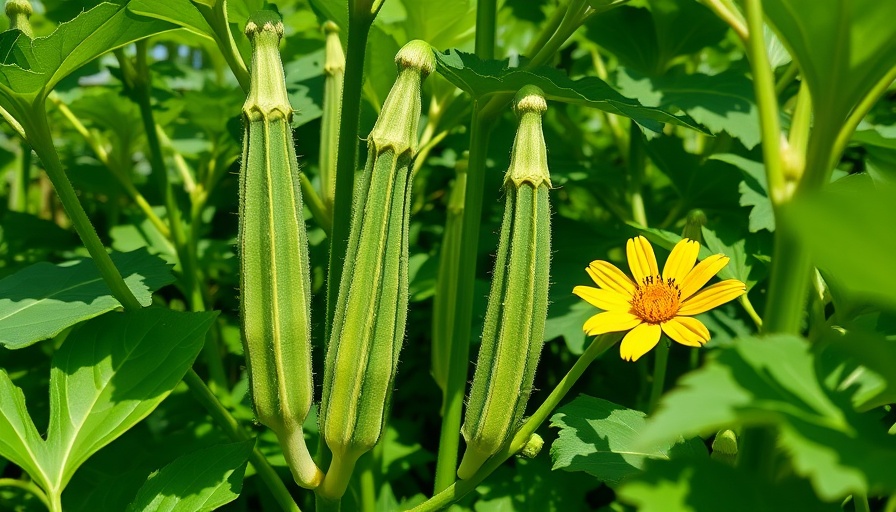
Explore the Benefits of Growing Okra at Home
Okra, also known as lady fingers or bhindi, is a versatile vegetable that not only enhances your culinary skills but also adds nutritional value to your diet. Rich in fiber, vitamins A, C, and K, this nutrient-packed vegetable is a great addition to home gardens, providing a delicious, unique flavor to a variety of dishes. As more people lean towards home gardening to promote healthier eating habits, okra presents a perfect opportunity for both beginners and experienced gardeners alike.
Historical Context of Okra in Cuisine and Culture
This ancient crop can trace its roots back to tropical Africa and Asia, where it has been cultivated for centuries. Egyptian hieroglyphics even depict okra, marking its historical importance. In Southern American cuisine, especially in Creole and Cajun cooking, okra plays a pivotal role as a thickening agent in gumbo, showcasing its adaptability and significance. Its flavors and textures make it a cherished ingredient across many cultures.
Choosing the Right Cultivar: Varieties of Okra
When embarking on your okra-growing journey, the choice of cultivar matters. From dwarf to tall varieties, selecting the one that fits your garden space is crucial. Varieties like ‘Clemson Spineless’ and ‘Burgundy’ are popular among home gardeners for their productivity and unique appearances. Ensure to choose varieties based on your culinary preferences and the growing conditions of your garden.
Optimal Growing Conditions for Thriving Okra Plants
Okra thrives in warm, sun-drenched gardens with well-draining loamy soil—this is essential for healthy growth. For ideal successful planting, follow these guidelines: plant seeds about an inch deep and 12 inches apart as they grow tall and need sufficient room. Watering 7-10 days thoroughly helps to keep the soil moist but not soggy. Understanding these conditions can greatly improve your harvest.
Pest Management: Safeguarding Your Garden
As with any crop, vigilant management of garden pests is important. Whiteflies, aphids, and spider mites are common threats to okra plants. Implement strategies like companion planting, where beneficial insects like ladybugs can flourish, aiding in pest control. Additionally, natural insecticidal sprays can provide an organic solution for managing infestations without harming the environment.
Harvesting Tips to Maximize Your Okra Yield
Understanding the right time to harvest is key to enjoying the freshest okra. Look for pods that are about 2-4 inches long; harvesting too late can lead to tough and fibrous textures. Regular harvesting encourages the plant to produce more pods. Utilize garden tools like pruning shears for clean cuts to maintain the plant's health.
Cooking with Okra: Culinary Opportunities
From stir-fries to deep-fried snacks, okra adds flavor and nutrition to a plethora of dishes. Its ability to thicken soups and stews also makes it a valuable ingredient in culinary arts. A simple recipe like sautéed okra with spices can turn it into a standout side dish. By incorporating okra into your meals, you not only diversify your diet but also reap its health benefits.
Conclusion: Embrace Home Gardening with Okra
The growing trend toward home gardening not only promotes healthier eating habits but also fosters a deep appreciation for where our food comes from. Okra’s unique flavor and nutritional profile make it a fantastic choice for anyone looking to enhance their garden. Start today by considering these tips, and watch your home veggie patch flourish!
 Add Row
Add Row  Add
Add 




Write A Comment